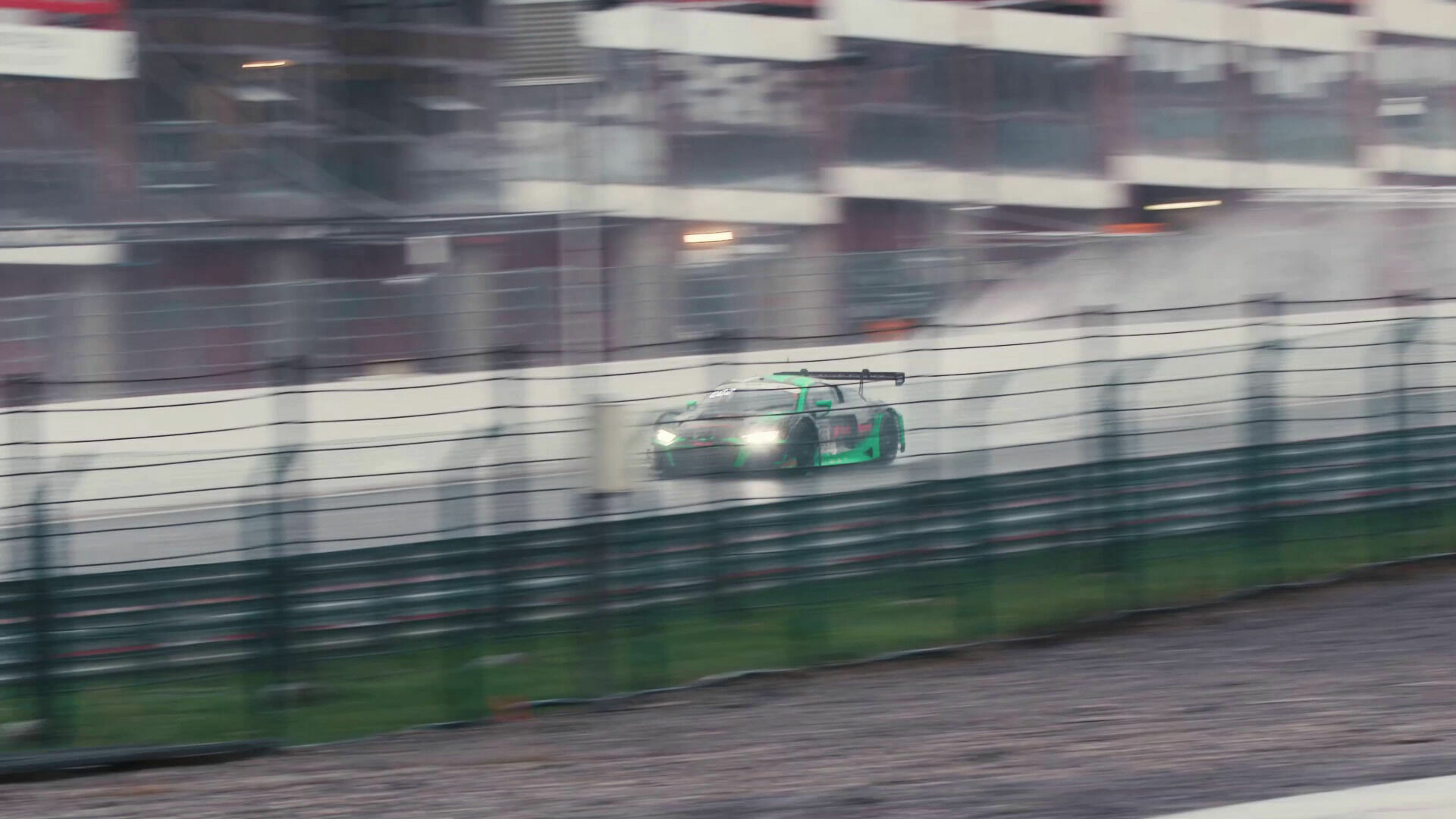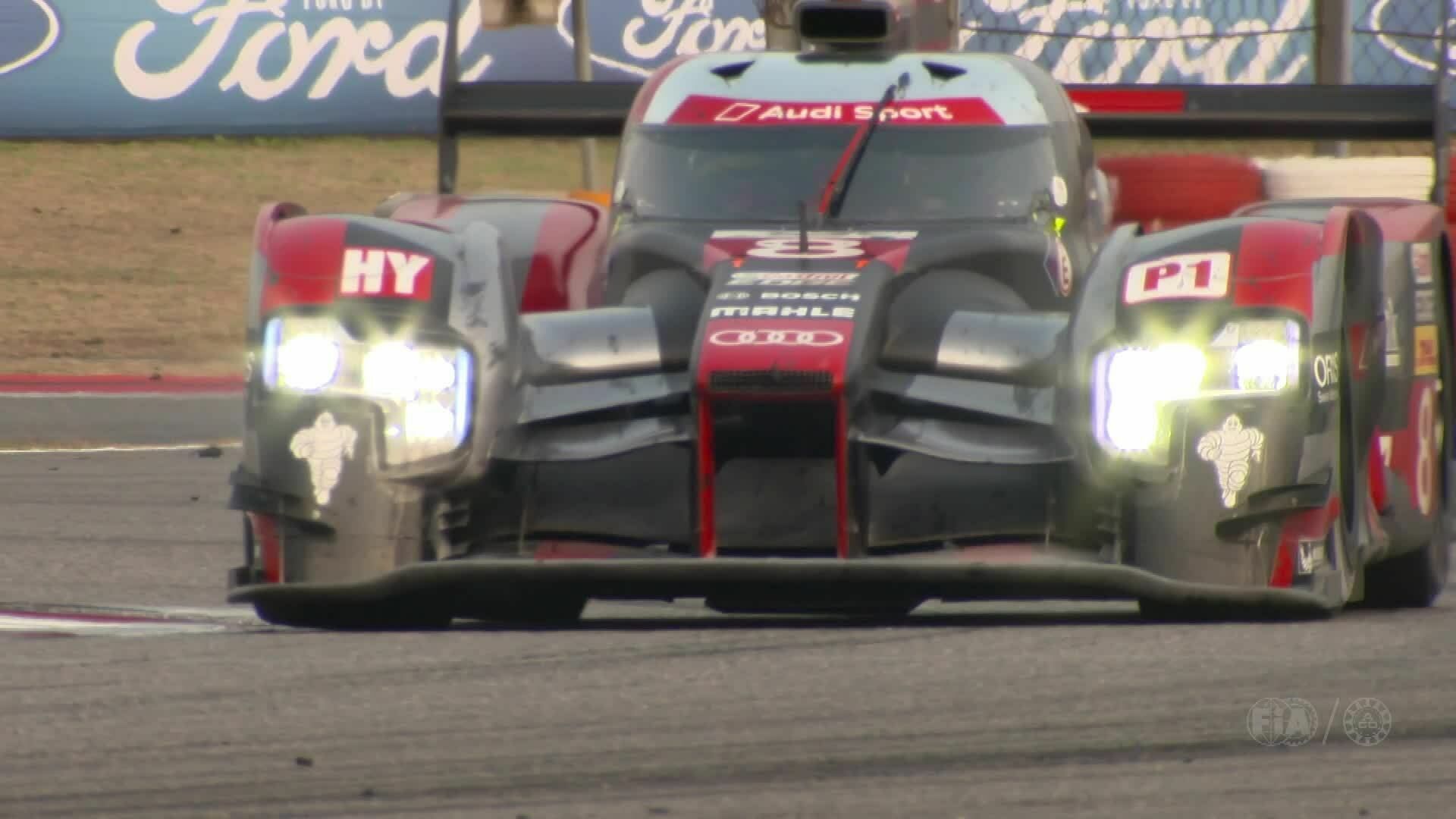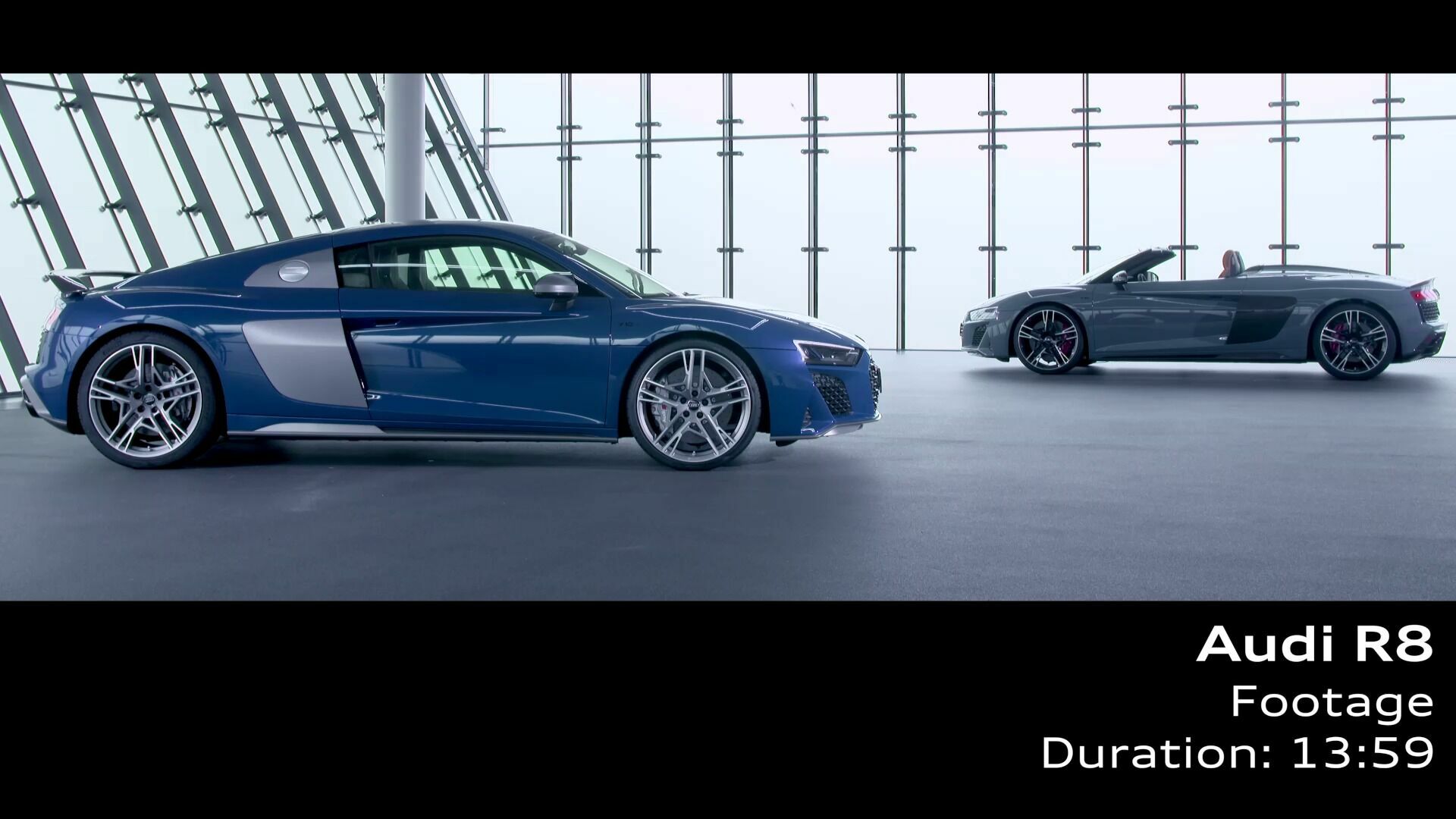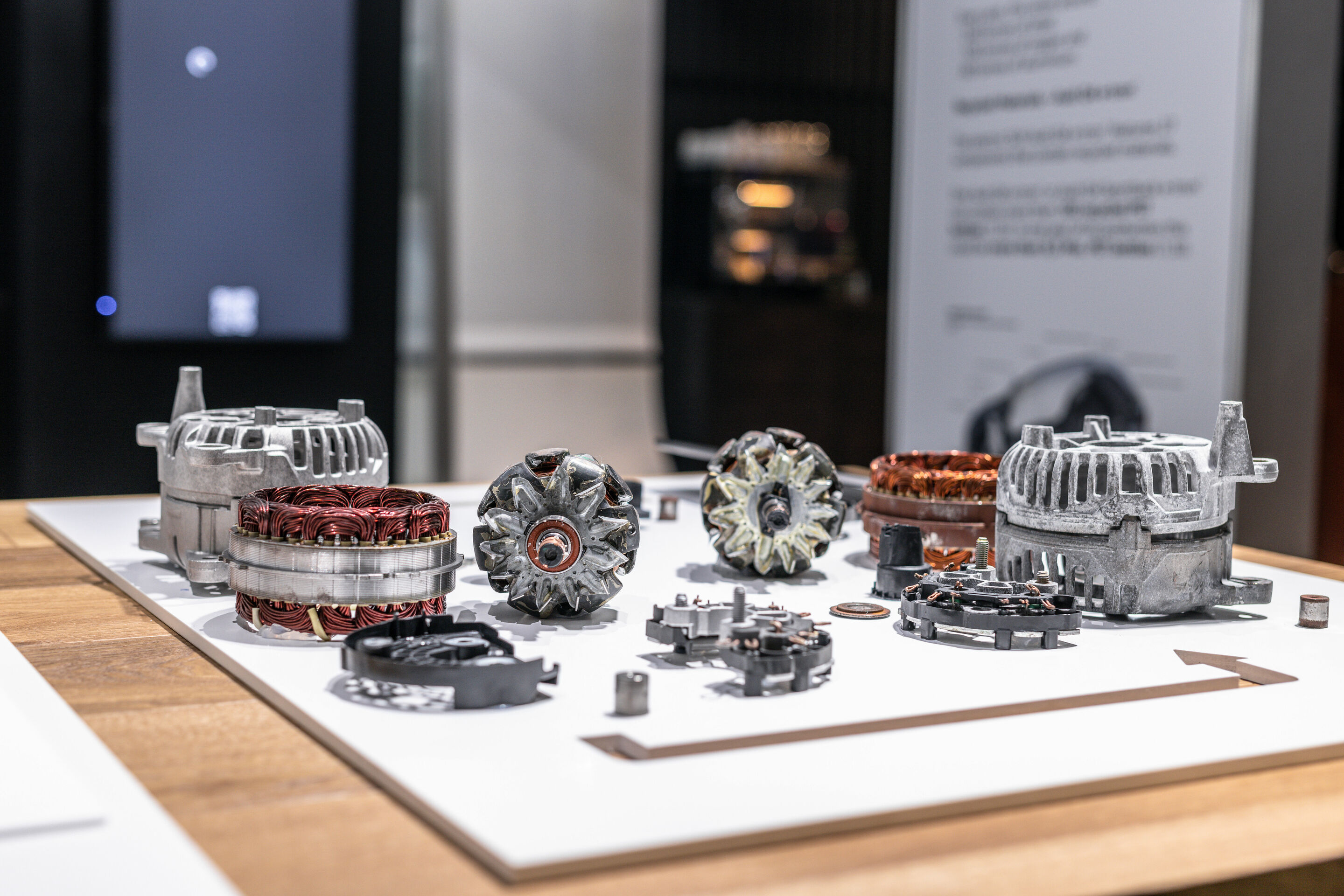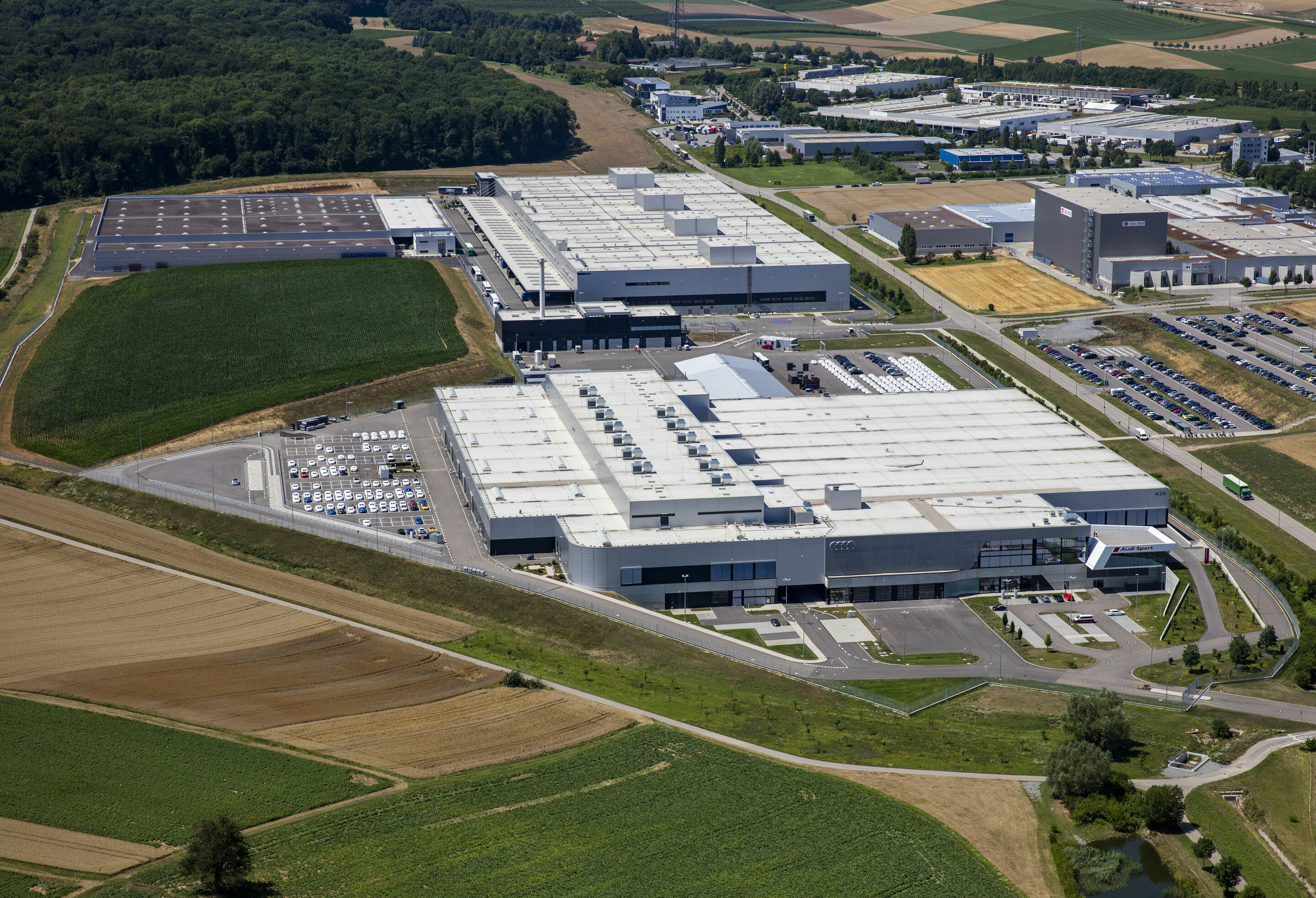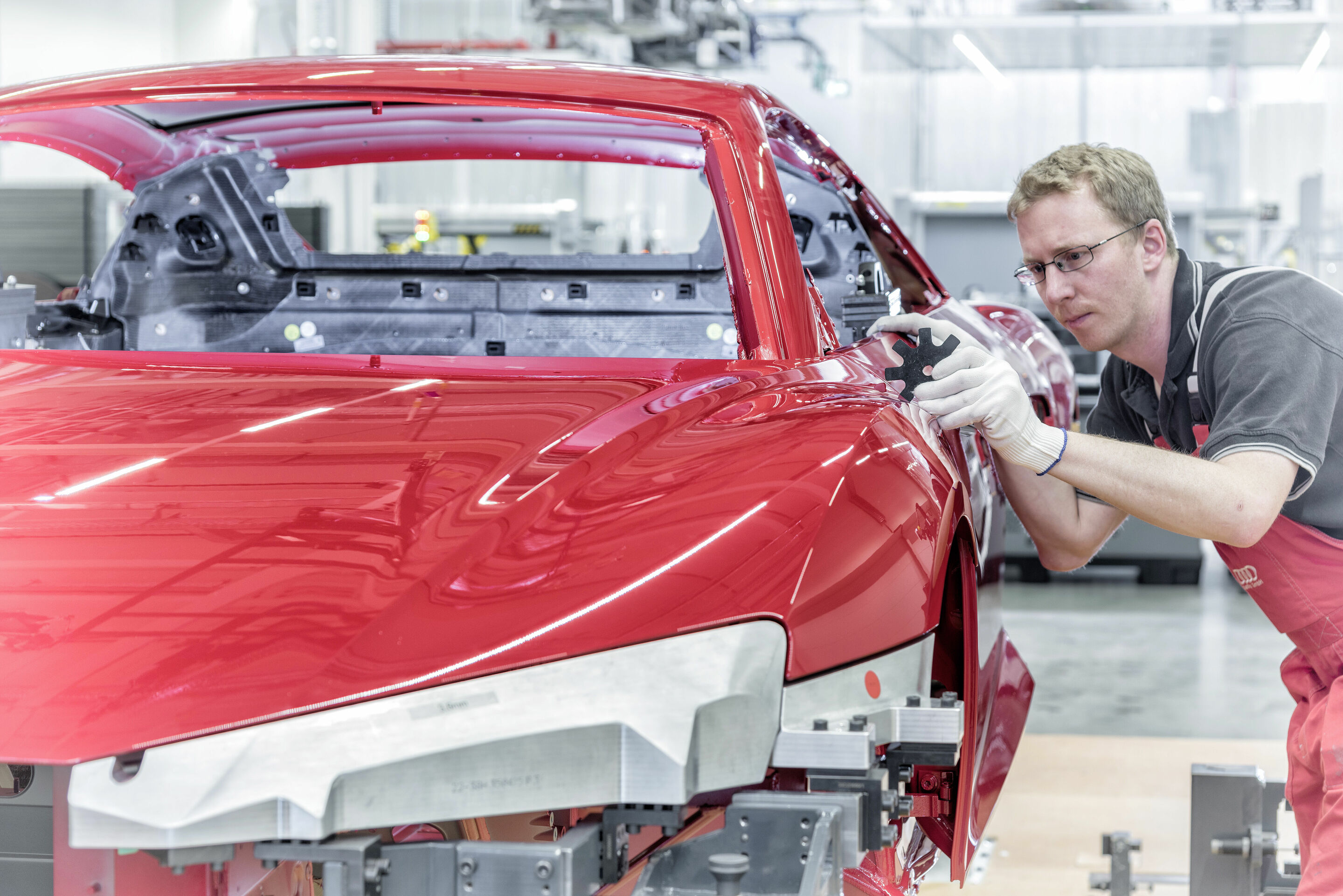Search
All search results for "R8 Manufaktur"
(787)

The R8 was Audi’s first super sports car and the result of a cooperation with subsidiary Lamborghini A total of 45,949 units have left the Neckarsulm and Böllinger Höfe plants since 2007 The final particular model is a pinnacle: the R8 V10 GT RWD with rear-wheel drive
A super sports car legend takes its leave: In its 17 years, the Audi R8 has captured hearts and celebrated just as many successes. After 45,949 units produced, the final R8 rolled off the line at Böllinger Höfe in March 2024. A look back at an unparalleled success story.
Breathtaking design, a tantalizing engine sound, and driving dynamics like no other road-legal Audi ever offered: When it was unveiled in 2006, the R8 was a revolution – in Germany and around the world. A mid-engine super sports car; never before had Audi offered such a vehicle. With the R8, Audi moved into more exclusive segments previously dominated by brands such as Ferrari, Porsche, and Lamborghini. The Audi R8 was developed and built by the former quattro GmbH (today: Audi Sport GmbH). It immediately became the sporty icon in the company’s product portfolio and continues to contribute to the exclusive image of the Audi brand to this day. The R8 name refers to a successful race car that brought Audi more wins at Le Mans than any other manufacturer in history: In 1999, Audi launched its legendary Le Mans program with a sports prototype that started in the LMP900 class. The first name of this racing prototype was R8. It won at the 24 Hours of Le Mans in 2000, 2001, 2002, 2004, and 2005, making it the Le Mans sports car with the most victories in modern history. The prototype claimed more victories at the 12 Hours of Sebring, a race in the USA, which it won every year from 2000 to 2005. With these victories, Audi increased its prestige in international racing and laid the foundation for the road-legal R8 super sports car.
 Audi Tradition - Anniversary Dates 2025
Audi Tradition - Anniversary Dates 2025
Anniversary Dates 2025 Audi Tradition 2 Anniversary Dates 2025 Contents Anniversaries in Our Corporate History May 2000 25 years Market Launch of the Audi allroad quattro ....5 June 2000 25 years Sales Launch of the Audi RS 4 B5 ...............6 June 2000 25 years Market Launch of the Audi A2 ..................... 7 December 2000 25 years Audi museum mobile Ingolstadt ................9 March 1990 35 years Presentation Audi duo .............................10 September 1990 35 years First Appearance Audi Coupé S2...............11 January 1985 40 years Renaming of Audi NSU Auto Union AG to AUDI AG ..........................................................12 Autum 1985 40 years Audi Introduces Fully Galvanized Bodies in Mass Production ...............................................13 February 1980 45 years Audi 200 5T – Audi’s First Turbocharged Petrol Engine .......................................................14 Oktober 1975 50 years Audi 80 GTE ...........................................15 End of 1975 50 years Start of Porsche 924 Production in Neckarsulm ......................................................16 Oktober 1970 55 years Market Launch of the Audi 100 Coupé S ....17 September 1965 60 years Reintroduction of the Audi Brand ..............18 1965 60 years NSU Prinz 1000 TT and NSU Typ 110 ........ 20 September 1955 70 years Large DKW 3=6 ....................................... 22 Audi Tradition 3 Anniversary Dates 2025 End of 1955 70 years DKW Plastic Bodies .................................. 23 August 1950 75 years First DKW Passenger Car After the War ..... 25 December 1945 80 years Establishment of the Central Depot for Auto Union Spare Parts in Ingolstadt ................ 26 February 1935 90 years Introduction of the Horch 850 Series ........ 27 February 1935 90 years Roadster Models of 1935......................... 28 Audi Tradition 4 Anniversary Dates 2025 Contents Motorsport 2000 25 years Audi’s First Victory at Le Mans .................. 30 1990 35
 Motorsport history
Motorsport history
Audi is positioning itself as the sportiest manufacturer in the premium segment and has a perfect basis for this: motorsport. Sportiness, advanced technology and emotional design are the foundations for the success of the Audi brand. Valuable genes for this come from motor racing.
Entering the premier class of motorsport
Audi is facing what is arguably its biggest challenge in motorsport. From the 2026 season, the brand will be competing in the FIA Formula 1 World Championship with its own works team. Development of the drive unit (“Power Unit”) is in full swing at the Neuburg an der Donau site. Thanks to open competition, Formula 1 serves as a technology driver for both electromobility and sustainable e-fuels. Photo: Showcar with Audi F1 launch livery
Milestones
Success with electric drive concepts
Sustainability does not only play an important role in the premier class of motorsport. The company began electrifying its motorsport program in endurance racing in 2012. With the first victory of a hybrid racing car at the Le Mans 24 Hours, Audi achieved a pioneering feat at the world’s most important endurance race in 2012. The Audi R18 e-tron quattro remained unbeaten three times in a row at Le Mans in 2012, 2013 and 2014. Many other innovations such as the Audi laser light complement the pioneering technical achievements. Drivers and manufacturers titles with the hybrid sports car in the 2012 and 2013 FIA World Endurance Championship (WEC) complete the Audi sports car era, which ended in 2016. Following the LMP program with the R18 hybrid sports car, Audi was the first German car manufacturer to compete in the all-electric Formula E racing series in the 2017/2018 season. With four victories and a total of eleven podium finishes, Audi Sport ABT Schaeffler clinched the team championship after twelve races. Things continued to go electric after that: the brand with the four rings competed in the famous Dakar Rally from 2022 with an innovative prototype.
 Agile shimming: Audi introduces new technology in body shop
Agile shimming: Audi introduces new technology in body shop
In their quest for perfect accuracy, body shop workers at Audi often use fine shims to adjust equipment by tenths of a millimeter. “Agile shimming”, which is used on the two-way framer at the Audi Sport plant at Böllinger Höfe, is a unique technology within the group. Shimming during the fitting of the exterior side parts was automated at one location and connected to the in-line measurement station via a control circuit. An algorithm automatically adjusts the actuators. Audi employees from Neckarsulm and Ingolstadt developed the technology together.
Manual shimming is an art unto itself. By adding or removing fine shims at geometrically crucial clamping points, the position of a part can be adjusted by tenths of a millimeter before it is fitted. Previously, shimming was based solely on the experience of employees. At the heart of agile shimming is an algorithm that continuously monitors the dimensional accuracy data from the in-line measurement technology and calculates optimal compensation values. Thanks to the closed control circuit, a built-in linear motor directly adjusts the clamping points based on the data from the measurement station. “The measurements clearly show that agile shimming has made us even more precise”, says Wolfgang Shanz, Head of Audi Sport Production at Böllinger Höfe. “It is also noteworthy that the project was developed and implemented entirely in-house. ‘Agile’ describes not only the technology, but how we work.” The technology is being used in the body shop for the Audi e-tron GT. As a real-world laboratory, small-series production at Böllinger Höfe plays a special role in advancing the digitalization of production and logistics. At Böllinger Höfe, Audi tests intelligent solutions for the fully connected and smart factory.
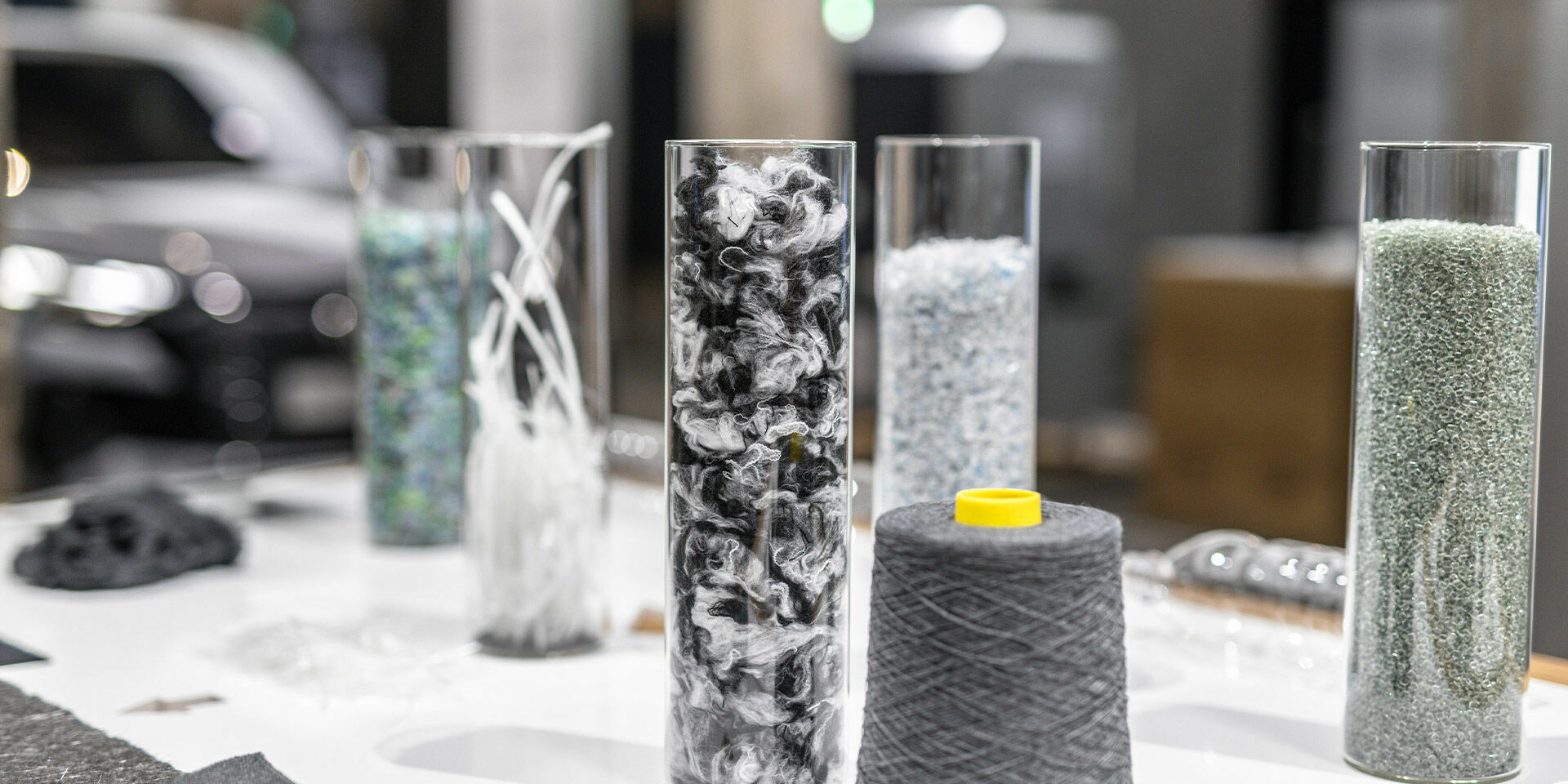 Circular economy
Circular economy
Circular economy: keeping materials in the cycle with no loss of quality
The circular economy is an alternative to linear economies, which primary rely on easily accessible primary raw materials and low-cost energy. In simple terms, the two concepts differ in their use of resources. In a linear economy, raw materials are processed once and disposed of after use. In contrast, a circular economy works by reprocessing raw materials multiple times in their original quality and reusing them again and again for the production of goods and commodities. Key steps in this approach include the maintenance, repair, refurbishment, and finally, recycling of parts and components. The circular economy is based on the idea that all parts can be used sustainably, especially if they are in operation for as long as possible and if they are used for their initial manufactured purpose without being downcycled. Among other benefits, the reuse of valuable resources can help reduce our dependency on critical primary raw materials. It can also reduce the carbon footprint when the processing of used materials results in lower emissions than the production of new primary materials. For all these reasons, Audi views the responsible use of raw materials as a central aspect of future-oriented automobile production. The aim is to develop and produce vehicles in a more resource-efficient and recycling-friendly manner, to keep them in use for as long as possible, and to recycle them to the best possible extent at the end of life. After a vehicle’s utilization phase, its materials are returned to the value chain, capturing more key resources in ‘closed cycles’ where they remain in use and decrease the need for new materials. In this endeavor, Audi follows a holistic concept based on the principles of reduce, reuse, and recycle.
Reduce: fewer primary materials, longer utilization phase
The reduce principle encompasses measures during the production process and the downstream utilization phase.
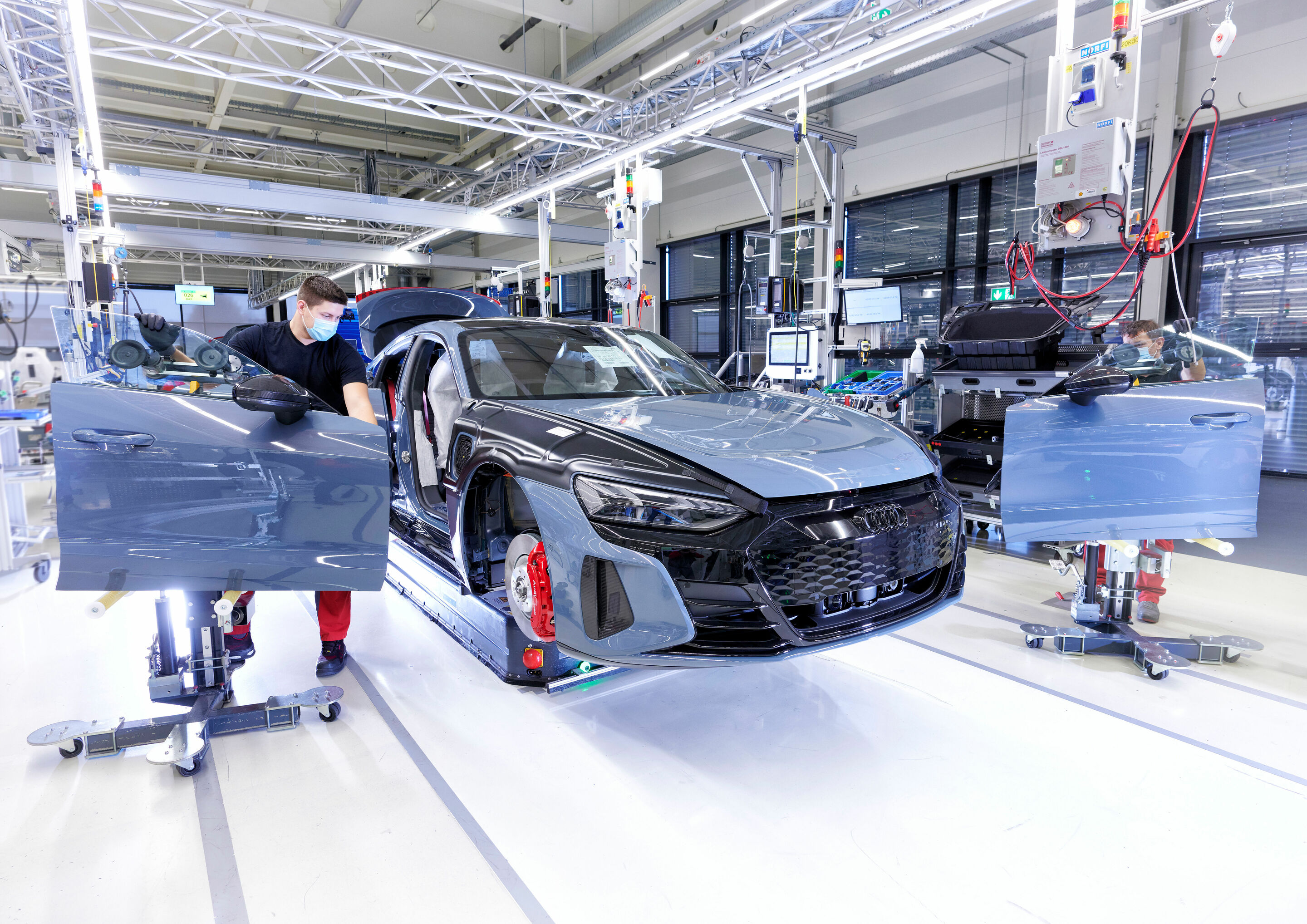 Supply chain
Supply chain
Responsibility for people and the environment: Audi brings its sustainability requirements to the supply chain
How a company operates affects both people and the environment. Audi, therefore, centers its activities around sustainability. These include respecting human rights and adhering to environmental and social standards across the supply chain.
Building an Audi is an involved, elaborate process based on complex supply chains that are as diverse as they are global. The company encounters different cultures, cultural standards, and legal requirements within these supply chains. These give rise to ecological and social risks related to carbon emissions, working conditions, occupational health and safety, and additional social aspects. “We view our complex supply chain as an opportunity to enact positive changes. A few examples are avoiding damage to the environment, ensuring the sustainable use of resources, and assuming social responsibility. To this end, Audi works closely with its suppliers,” says Dr. Renate Vachenauer, Audi Board Member for Procurement. Audi’s commitment to more responsible supply chain management has exceeded the legal requirements for years to impact the well-being of people and the environment positively. Moreover, regulations at various political levels have required corporate responsibility throughout the supply chain in recent years. For example, Germany’s Supply Chain Due Diligence Act regulates corporate responsibility for complying with human rights or environmental due diligence in global supply chains; the law was passed in 2023. Audi follows a human rights strategy to successfully implement the legally required environmental, human rights, and due diligence targets alongside those that Audi has set itself. Strong partner companies along the supply chain are crucial in this pursuit. Sustainable action in complex manufacturing processes is only possible when all partners work together as equals in pursuing the same goal.
 Audi at the Neckarsulm site
Audi at the Neckarsulm site
Audi at the Neckarsulm site
The Audi Neckarsulm site has been manufacturing cars for over 100 years. Driven by innovative ideas, passion, and the pursuit of perfection, the location has developed from its beginnings as a knitting machine workshop to a modern car manufacturing site. AUDI AG is one of the largest employers in the Heilbronn-Franken economic region. 15,515 people work here for the Mobility of the Future. Current model series at location: Audi A5, Audi A6, Audi A7, Audi A8, Audi e-tron GT
Audi Forum Neckarsulm
The Audi Forum Neckarsulm creates experiences for visitors from the region and far beyond. Since opening in May 2005, the Audi Experience at the Audi site in Neckarsulm has been a focal point for guests and fans of the brand with the four rings. It serves as the portal to the plant during the day and is freely accessible to all visitors. In the evening the building transforms into a versatile stage for events. Up to 1,800 fans can then cheer to a pop concert or attend readings by book authors.
Ulla Wiesentheit
Production Sites Audi Group
 Successes spanning more than a century
Successes spanning more than a century
The success story of AUDI AG in motorsport Victories and titles since the beginning of the last century
Audi is positioning itself as the sportiest manufacturer in the premium segment and has a perfect basis for this: motorsport. Sportiness, advanced technology and emotional design are the foundations for the success of the Audi brand. Valuable genes for this come from motor racing.
Entering the premier class of motorsport Audi is facing what is arguably its biggest challenge in motorsport. From the 2026 season, the brand will be competing in the FIA Formula 1 World Championship with its own works team. Development of the drive unit (“Power Unit”) is in full swing at the Neuburg an der Donau site. Thanks to open competition, Formula 1 serves as a technology driver for both electromobility and sustainable e-fuels. Success with electric drive concepts Sustainability does not only play an important role in the premier class of motorsport. The company began electrifying its motorsport program in endurance racing in 2012. With the first victory of a hybrid racing car at the Le Mans 24 Hours, Audi achieved a pioneering feat at the world’s most important endurance race in 2012. The Audi R18 e-tron quattro remained unbeaten three times in a row at Le Mans in 2012, 2013 and 2014. Many other innovations such as the Audi laser light complement the pioneering technical achievements. Drivers and manufacturers titles with the hybrid sports car in the 2012 and 2013 FIA World Endurance Championship (WEC) complete the Audi sports car era, which ended in 2016. Following the LMP program with the R18 hybrid sports car, Audi was the first German car manufacturer to compete in the all-electric Formula E racing series in the 2017/2018 season. With four victories and a total of eleven podium finishes, Audi Sport ABT Schaeffler clinched the team championship after twelve races.

